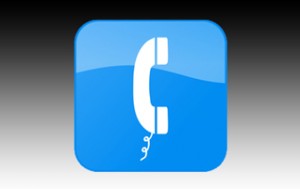 If you are a California worker getting ready to leave your current employment, the topic of severance packages will likely be on your radar, if it isn’t already––as it should be. These packages or documents can serve as monetary support through your transition out of one job until or while you start something new. However, if you are also on the brink of personal injury litigation, you need to be aware of the interaction between these different legal and financial components. Dealing with such a challenging scenario of negotiating a severance agreement while pursuing personal injury litigation against a California employer initiates a set of uniquely high stakes.
If you are a California worker getting ready to leave your current employment, the topic of severance packages will likely be on your radar, if it isn’t already––as it should be. These packages or documents can serve as monetary support through your transition out of one job until or while you start something new. However, if you are also on the brink of personal injury litigation, you need to be aware of the interaction between these different legal and financial components. Dealing with such a challenging scenario of negotiating a severance agreement while pursuing personal injury litigation against a California employer initiates a set of uniquely high stakes.
Balancing Financial Vulnerability and Legal Claims
Severance agreements and personal injury litigation can feel almost at odds with each other, but they are not mutually exclusive. As an employee injured in workplace incidents, your severance negotiations can provide an opportunity to secure financial stability while figuring out your personal injury claim. Employers like to rely on severance agreements to protect themselves, so you must keep an eye out for releases of liability or future claim limitations. Employees in litigation have to stay alert because they wouldn’t want the terms to impede their personal injury case.
Evaluating The Red Flags Within the Agreement
When you set out to review the agreement, you need to watch out for clauses that can negatively affect your future job possibilities and career tack and how signing or accepting this agreement will affect your personal injury claim. Employers often inject general releases into the agreement that waive an employee’s right to sue, which may inadvertently or deliberately encompass pending injury litigation. If you are an employee who is actively pursuing injury claims, then signing a lease with such a waiver could seriously harm your case and mean you have relinquished your primary rights without even fully realizing the impacts beforehand.
Alternatively, a tailored severance agreement would respect the existing boundaries of your legal dispute. Be on the lookout for any confusing legal terminology or language that attempts to relieve the employer from liability for the injury that is at the center of your case or restricts your ability to seek damages. Additionally, confidentiality or non-disparagement clauses can sometimes limit your capacity to discuss the injury or the circumstances surrounding it, which may also hinder your case. Therefore, working with an employment attorney and evaluating your agreement becomes a clear must––to keep any harmful legal provisions from being set in stone and interfering with your claim.
Finding The Leverage Points Within Negotiations
Personal injury litigations can inadvertently provide leverage in severance negotiations. Employers may seek to resolve potential disputes comprehensively, including the termination of employment. Highlighting the pending litigation as a factor in negotiations may encourage an employer to present more favorable terms to circumvent further and future risks. You need to emphasize your contributions to your boss or the company during negotiations and stress the circumstances of the injury and the employer’s potential liability to raise your negotiating stance so you can leverage for better, fairer terms.
Strategies for a Stronger Agreement
In Situations involving both severance and personal injury litigation, employees should prioritize retaining their rights to pursue legal remedies. One practical and promising approach is negotiating a “carve-out” provision, which explicitly excludes the injury claim from the release of liability clause in the severance package. These types of preparations and levels of foresight can help protect you while still accepting severance pay but not compromising the ability to seek compensation for your injuries.
You can also ask for other things, like for your health benefits to get extended, which can be a major thing if you are dealing with an injury, ongoing treatments, and other medical costs. Negotiation for job placement assistance or outplacement services is another opportunity to ease the transition, exhibit goodwill, and foster a more amicable path to resolution.
Balancing Your Present Needs With Those of Tomorrow
Working out severance terms while you are in the trenches of personal injury litigation calls for strategy, planning, and care––but it’s not impossible. Employees should weigh the current financial benefits of the severance package against its possible mark and its consequences on any other ongoing legal claims. California employment law offers employees serious protections, but you have to be aware of them and know where and when they apply. A trusted California employment attorney can spot troublesome clauses and expose, legalize, and negotiate terms that preserve your right to pursue justice while securing financial stability.
Beyond immediate negotiations, it’s critical to think ahead about the long-term consequences of accepting your severance agreement. Rushing into terms without serious evaluation can put you in a corner and bring waves of regret. Contact an experienced California employment attorney for a confidential and free consultation by calling us at 909-884-6451.



